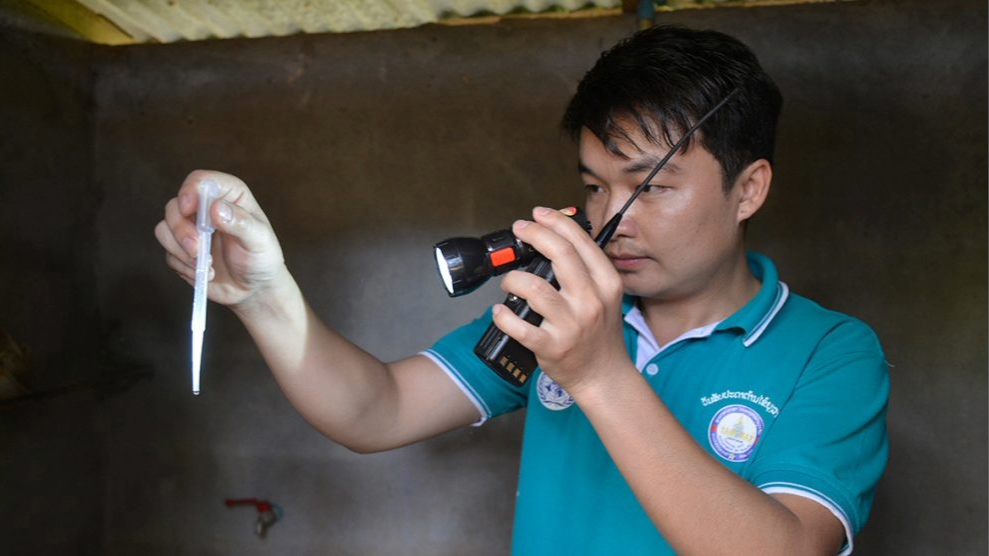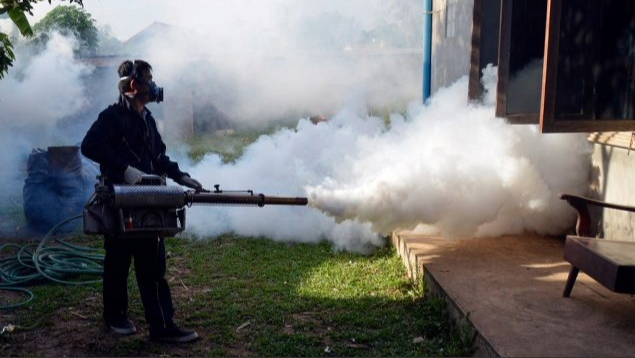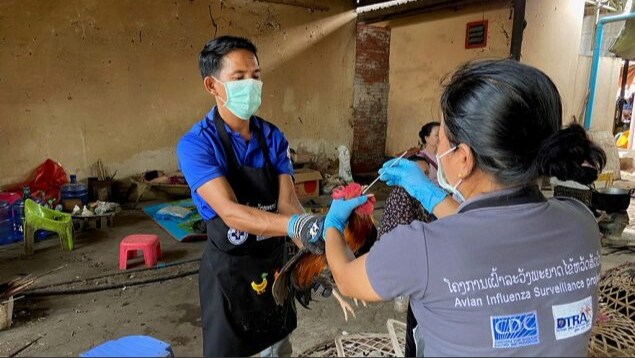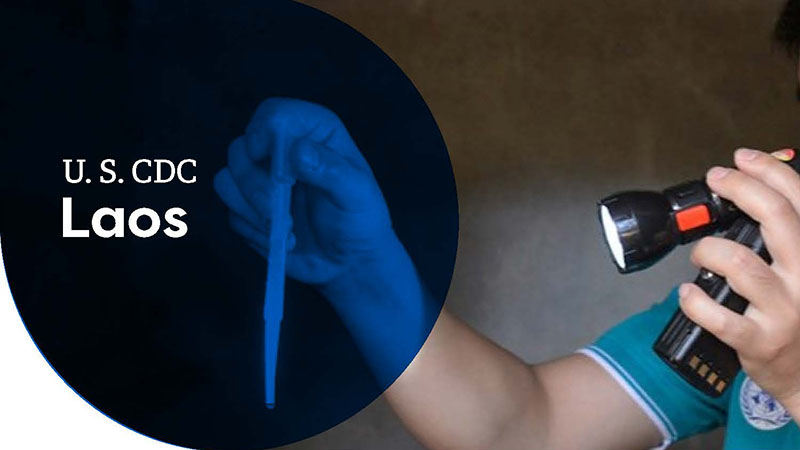At a glance
CDC works with the Lao Ministry of Health and other partners to build effective public health collaboration and partnerships, which strengthen the country's core public health capabilities: data and surveillance, laboratory capacity, workforce and institutions, prevention and response, innovation and research, and policy, communications, and diplomacy.

Overview

CDC has worked with partners in Laos since 2006. CDC Laos works closely with the Government of Laos and partner organizations to detect, prevent, and control infectious disease outbreaks and build and strengthen the country's core public health capabilities. These include data and surveillance, laboratory capacity, workforce and institutions, prevention and response, innovation and research, and policy, communications, and diplomacy. CDC's work aims to protect the health of our nations and public health around the world.
CDC Laos also works to address the following public health areas:
- HIV
- Tuberculosis (TB)
- Influenza
- Emerging health threats
Global health security
CDC works with local, regional, and global organizations to support emergency response, surveillance, laboratory systems, and workforce development. These efforts help bolster Laos' ability to prevent, detect, and respond to infectious disease outbreaks before they become global epidemics.
Workforce development
CDC provides technical support to strengthen epidemiology capacity through the Field Epidemiology Training Program (FETP). The Lao FETP was established in 2009 with support from CDC and the World Health Organization (WHO). The one-year program trains disease detectives to prevent, detect, and respond to public health threats.

Emergency response
CDC's partnership with the MOH was key to building a successful COVID-19 response. CDC collaborates with multilateral and non-governmental partners in the following efforts:
- Provided laboratory technical expertise for genomic sequencing of SARS-CoV-2.
- Supported COVID-19 testing.
- Helped integrate COVID-19 surveillance into the influenza sentinel surveillance system.
- Collaborated on border health strengthening measures.
- Developed tools, materials, and guidance on how to safely continue HIV testing and treatment during the pandemic.
Border health
CDC and the MOH help prevent the spread of infectious diseases among travelers and mobile populations who cross international borders. CDC is supporting the development of a quarantine health program at key international points of entry. These include airports and land crossings on the border.
Key achievements
With CDC support, Laos has established:
- A national network of over 100 FETP graduates since 2009.
- Four internationally certified biosafety cabinet certifiers.
- Active emergency response plans for malaria and pandemic influenza.
- A One Health Program which conducts monthly avian influenza surveillance in poultry in 6 high-risk provinces. This surveillance has helped detect infections in poultry and wild birds due to avian influenza subtypes H5N1, H5N6, and H9N2.
HIV and TB
As a key implementer of the U.S. President's Emergency Plan for AIDS Relief (PEPFAR), CDC plays an essential role in the fight against HIV and TB. With unmatched scientific and technical knowledge and long-standing relationships with ministries of health, CDC is uniquely positioned to advance HIV, TB, and other global health security activities that keep Americans safe at home and abroad.
Through PEPFAR, CDC provides critical support to Laos' public health infrastructure, improving the country's ability to prevent, detect, and respond to HIV, TB, and other infectious diseases and minimizing their risk from entering the U.S.
Influenza

CDC’s influenza work includes support for:
- Monitoring and tracking the spread of influenza in humans and animals, with a focus on highly dangerous avian influenza.
- Priority seasonal influenza vaccination programs by enhancing surveillance and response for seasonal, avian, and pandemic influenza.
- Influenza laboratory and epidemiologic surveillance, early warning systems, and outbreak response.
- Increasing the use of evidence-based data to inform policy decisions for influenza vaccination programs and other prevention and control programs.
Key achievements
CDC's support has:
- Enhanced surveillance to detect and monitor threats from novel influenza A subtypes and other emerging respiratory pathogens.
- Helped evaluate state-of-the-art devices that detect influenza during site visits and help facilitate rapid response.
- Supported national rapid response trainings and cross-border exercises on responding to influenza viruses with pandemic potential.
